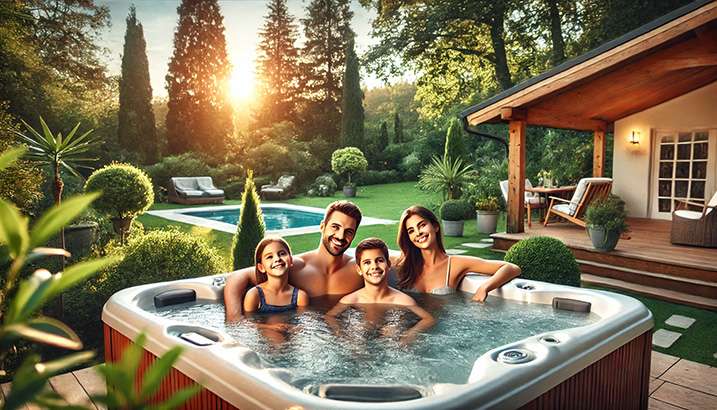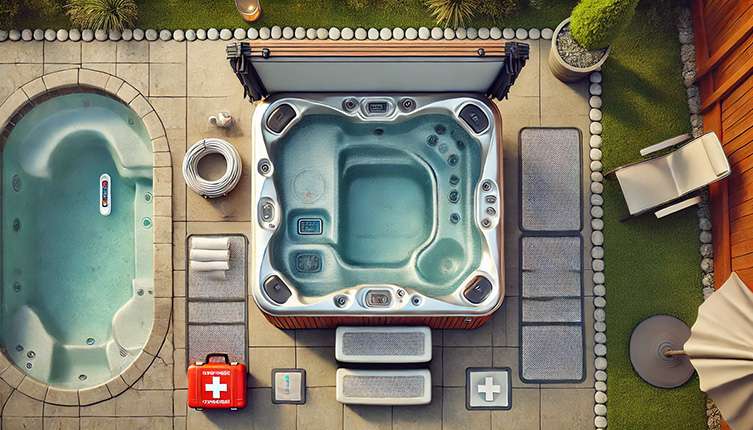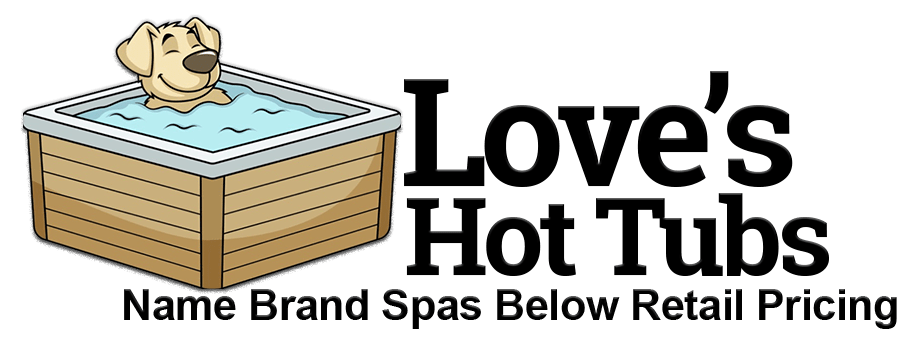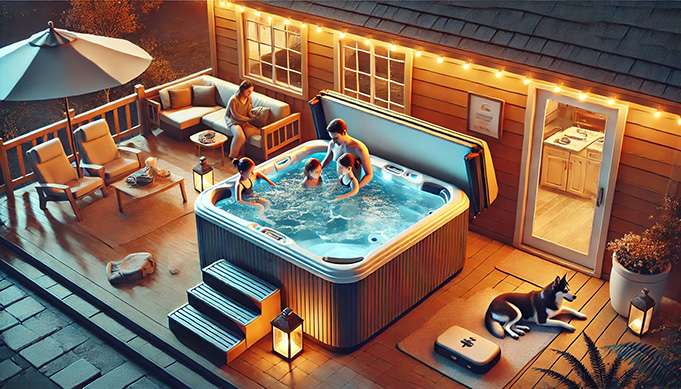Hot tubs offer relaxation, hydrotherapy, and family bonding opportunities, but they also require responsible usage to ensure the safety of everyone, especially children and pets. While hot tubs provide numerous health benefits, improper use can lead to accidents, injuries, or even serious health risks. This comprehensive guide will discuss essential hot tub safety tips for families to create a secure and enjoyable experience.
1. Supervision is Key
- Supervision should be continuous and vigilant. A responsible adult must be designated to oversee hot tub activities, ensuring no one enters without adult supervision.
- Pets should be kept away from the water unless closely monitored. Many pets, especially smaller animals, may get curious and fall in.
- Buddy System: Children should always be accompanied by an adult or another child when using the hot tub. This helps ensure they don’t get too tired or overwhelmed, especially in hot water.

2. Establish and Enforce Safety Rules
- No running or rough play: The area around the hot tub can be slippery, and running increases the risk of falls. Teach children that calm, slow movements are necessary around the hot tub.
- Hair and jewelry: Long hair should be tied back to prevent it from getting caught in the jets or the filtration system. Similarly, jewelry like earrings or necklaces can get caught, so it’s advisable to remove them before entering.
- Glass containers: Avoid bringing glass containers around the hot tub, as breakage can lead to injury. Instead, opt for plastic or metal cups to prevent accidents.
3. Maintain Safe Water Temperature
- For children, a safe maximum water temperature is 98°F (37°C). Younger children are especially sensitive to heat, and they may not be able to regulate their body temperature as well as adults.
- Limit the amount of time spent in the hot tub. The general guideline is 15-20 minutes per session to prevent overheating. Encourage breaks in between so everyone stays refreshed.
- Floating thermometer: Invest in a thermometer that floats, allowing you to check the water temperature consistently. This tool will help ensure the water stays within safe limits.
4. Prevent Drowning Hazards
- Lockable covers: After each use, always close the hot tub with a lockable cover. This cover should be strong enough to prevent children or pets from lifting it on their own.
- Fencing and gates: Consider installing a fence or safety barrier around the hot tub, especially if you have young children. This will help keep them safe when you’re not using the hot tub.
- Alarm systems: Besides fencing and locks, you can install an alarm system that will alert you when someone tries to enter the hot tub area. These systems are especially useful for families with younger children who may wander off.
5. Ensure Proper Chemical Balance
Maintaining the correct chemical balance in the hot tub is crucial for preventing skin irritation, infections, or other health issues. Proper water chemistry ensures that the water stays sanitized, clear, and free from harmful bacteria and pathogens.
- Regular water testing: Using a reliable test kit, you should test your hot tub water at least twice a week. Test for key factors such as pH, chlorine or bromine levels, and alkalinity. This will help prevent the water from becoming too acidic or basic, both of which can irritate skin and eyes.
- Sanitizers: Use chlorine or bromine to sanitize the water. These chemicals help kill harmful bacteria, ensuring the water remains safe for use. The appropriate level of sanitizer should be maintained according to manufacturer guidelines.
- Shower before use: Encourage everyone to shower before entering the hot tub. This helps remove lotions, oils, or dirt that could alter the water’s balance and decrease effectiveness.
6. Prevent Slips and Falls
- Non-slip mats: Use non-slip mats around the hot tub area to reduce the risk of falls. These mats provide extra traction and make it safer for everyone to move around.
- Adequate lighting: Install proper lighting around the hot tub, especially for evening use. Proper illumination reduces the risk of stumbling in the dark and ensures everyone can see where they’re stepping.
- Dry surroundings: Always wipe down excess water around the hot tub area. Spills from the hot tub can make surfaces slippery, so keep the area dry to prevent accidents.
7. Avoid Electrical Hazards
- Keep devices away: Ensure that electrical devices, such as phones, radios, or other electronics, are kept away from the hot tub. Even splashes of water could create an electrical hazard.
- Professional installation: Always have your hot tub installed by a licensed professional. A qualified electrician should ensure that the wiring is properly done, and all components are grounded safely.
- GFCI outlet: Install a Ground Fault Circuit Interrupter (GFCI) outlet for all electrical connections related to the hot tub. A GFCI will shut off power during a fault, preventing electrical accidents.
8. Teach Children Hot Tub Safety
- Overheating: Explain to children the dangers of prolonged exposure to hot water, such as overheating. They should understand the importance of taking breaks and staying hydrated.
- Entering and exiting: Teach children to enter and exit the hot tub to avoid slips and falls. This is especially important for younger children or those unfamiliar with using the steps properly.
- Proper hot tub use: Ensure children understand that the hot tub is not a swimming pool or a play area. It’s meant for relaxation and should be used calmly and controlled.
9. Be Mindful of Health Risks
- Pregnant women: Pregnant women should consult with a doctor before using a hot tub. High water temperatures can lead to dehydration, overheating, or affect fetal development. It is generally advised that pregnant women avoid water temperatures above 100°F (37.8°C), and limit their time in the hot tub to prevent overheating.
- Elderly individuals: Older adults may be more vulnerable to changes in body temperature. They may also have underlying conditions such as heart disease, which can be worsened by heat exposure. Ensure they limit their time in the hot tub and monitor their body’s reaction to the heat.
- Heart conditions: Individuals with heart problems should seek medical advice before using a hot tub. The heat can place extra strain on the cardiovascular system, potentially causing a rise in blood pressure and increasing the risk of heart attacks. It’s crucial for those with heart conditions to either avoid hot tubs or only use them under medical supervision.
- Open wounds or infections: Avoid using the hot tub if you have an open wound or active infection. If not properly maintained, hot tubs can harbor bacteria and other microorganisms that may infect open wounds. It’s best to wait until the wound is fully healed before entering the water.
10. Proper Storage of Chemicals
- Lockable storage: All hot tub chemicals, such as chlorine, bromine, and pH balancers, should be kept in a locked, secure storage area. This prevents accidental exposure and ingestion by children or pets.
- Manufacturer’s instructions: Follow the manufacturer’s guidelines when adding chemicals to your hot tub. Overuse or incorrect mixing can lead to dangerous chemical reactions or ineffective sanitation. Always read and understand the instructions for each chemical you’re using.
- Protective gear: When handling hot tub chemicals, always wear protective gloves, eyewear, and even a mask if necessary. This will protect you from chemical splashes or inhalation.
- Proper disposal: Never dispose of chemicals by pouring them directly into the environment. Follow local regulations for chemical disposal, and never leave empty chemical containers around the hot tub area.
11. Be Prepared for Emergencies
- First aid kit: Always have a well-stocked first aid kit nearby. It should include essentials like bandages, antiseptic, gauze, and items to treat minor cuts, burns, or allergic reactions. Having this on hand ensures a fast response in case of an injury.
- Flotation devices: Have a life-saving flotation device accessible in case of an emergency, especially if there are children or inexperienced swimmers in the hot tub. Items like life vests or inflatable rings can make a big difference in a time of need.

- CPR and first aid training: Learn CPR (cardiopulmonary resuscitation) and basic first aid. These skills can save lives in situations like drowning or choking. Many local community centers or hospitals offer training courses for these essential life-saving skills.
- Emergency contact numbers: Always post emergency contact numbers in a visible location near the hot tub. This should include local emergency services, poison control, and family members’ numbers so help can be reached quickly in an emergency.
12. Regular Hot Tub Maintenance
- Filter cleaning: Regularly clean the hot tub filters to ensure proper water circulation. Clogged filters can result in stagnant water, leading to bacterial growth. Depending on usage, filters should be cleaned at least once a month or replaced every 6 to 12 months.
- Water changes: Drain and refill the hot tub every 3-4 months to ensure the water remains fresh and properly balanced. Even with regular chemical treatments, the water quality can degrade over time due to accumulated contaminants.
- Jet and drain inspection: Inspect the jets and drains regularly for signs of blockage or wear. Debris can accumulate, potentially causing water to flow unevenly or disrupting the filtration system. Ensure that the jets are free of obstructions to maintain water circulation.
- Routine checks: Make it a habit to check the hot tub’s overall condition regularly. Look for cracks, leaks, or signs of malfunction and repair them immediately to avoid larger problems down the line.
13. Pet Safety Around Hot Tubs
- Training pets: It’s essential to train pets to stay away from the hot tub. This can prevent accidental falls, especially with older or smaller pets struggling to climb out.
- Fresh water: Ensure pets have access to fresh, clean water nearby to prevent them from being tempted to drink from the hot tub. Hot tub water can contain chemicals that are harmful if ingested by animals.
- Lockable cover: Use a sturdy, lockable cover after every use. This protects the hot tub from debris and ensures that pets cannot gain access to the water unsupervised.
14. Secure Hot Tub Covers
- Lockable covers: Invest in a lockable cover to keep children and pets from gaining access to the hot tub when it is not in use. This extra layer of security ensures that no one can accidentally fall into the hot tub, especially when it’s not in use.
- Insulated covers: Choose a well-insulated cover to help maintain water temperature and reduce energy costs. Insulated covers also prevent debris from contaminating the water and help protect the tub from weather conditions.
- Cover maintenance: Regularly inspect the hot tub cover for damage. Replace it if it becomes torn, cracked, or unable to seal properly. A damaged cover can compromise the safety of your hot tub, as well as its energy efficiency.
15. Monitor Weather Conditions
Weather conditions play a major role in the safety of using your hot tub. Extreme temperatures or storms can increase the risk of accidents, so being aware of the forecast before using the hot tub is essential.
- Avoid thunderstorms: Never use the hot tub during thunderstorms. Lightning can strike the water, causing serious injury or death. It’s best to wait until the storm has passed to ensure everyone’s safety.
- Extreme heat: During extreme heat, be cautious about spending too much time in the hot tub. Excessive heat combined with dehydration can lead to overheating or heatstroke, so limit soak times and take plenty of breaks.

- Cold weather: If you’re using your hot tub during cold weather, ensure that the area around the hot tub is free of ice and snow. Slippery surfaces can increase the risk of falling, especially as people exit the hot tub and may be in a relaxed state.
Conclusion
A hot tub from Love’s Hot Tubs can bring relaxation and health benefits to your home, offering the perfect escape for the whole family. However, prioritizing safety is key to ensuring everyone enjoys a worry-free experience. By following these essential safety tips, you can maximize fun and minimize risks. From supervision and maintenance to clear rules, every step you take will help create a secure, peaceful environment for your family.
References
Centers for Disease Control and Prevention. “What You Can Do to Stay Healthy in Hot Tub.”
United States Consumer Product Safety Commission. “CPSC Warns of Hot Tub Temperatures.”
Kids Plus Pediatrics. “Hot Tub Safety.”

